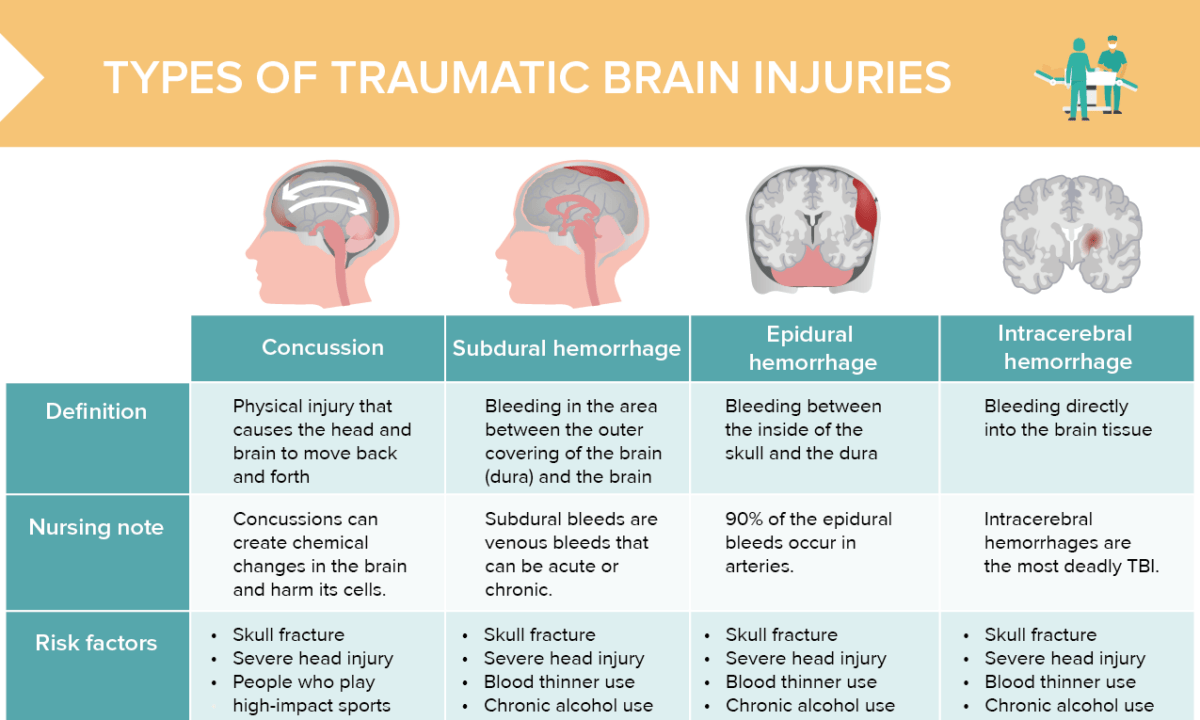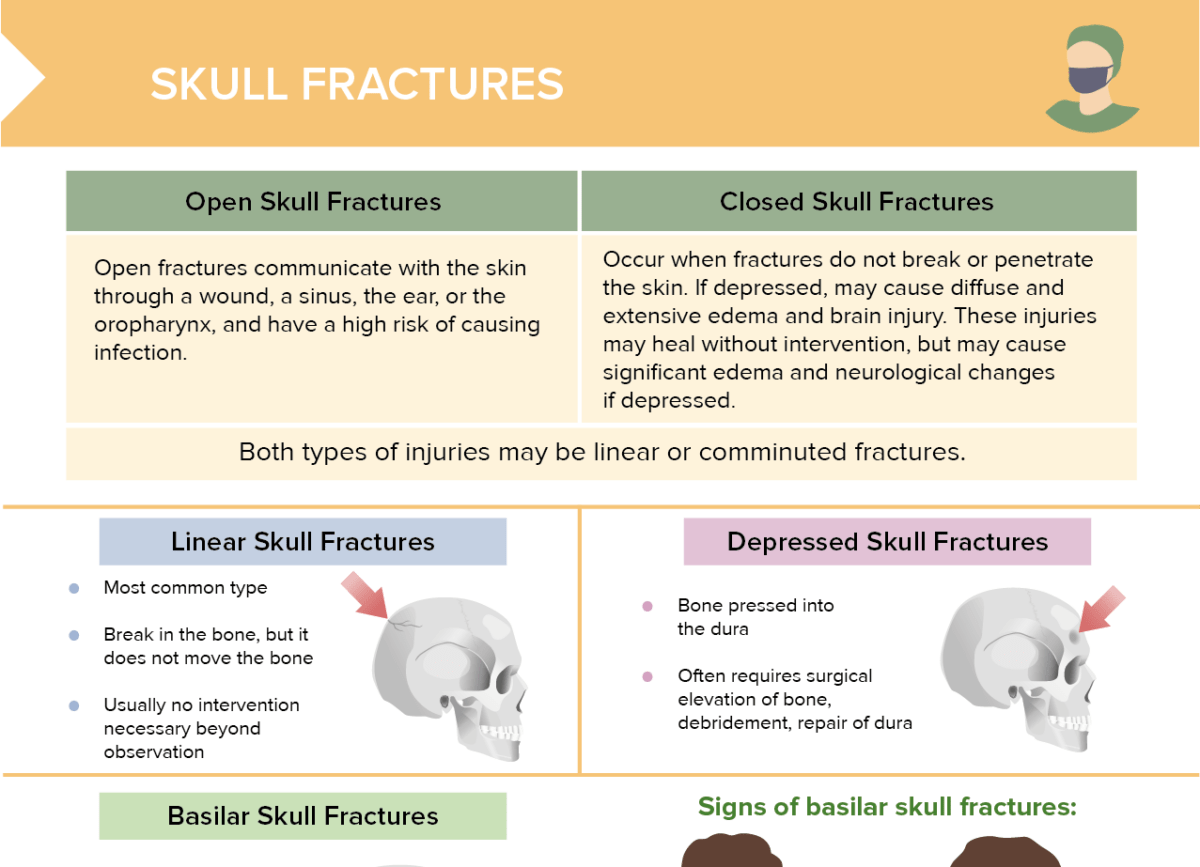What is a skull fracture?
A skull fracture is a break in one or more of the bones of the skull, usually due to trauma.
Open skull fractures
Open fractures communicate with the skin through a wound, a sinus, the ear, or the oropharynx, and have a high risk of causing infection.
Closed skull fractures
Closed skull fractures occur when fractures do not break or penetrate the skin. These injuries may heal without intervention. If depressed, they may cause diffuse and extensive edema and neurological changes.
Linear skull fractures
Linear skull fractures are the most common type of skull fracture. They are characterized by a break in the bone with the bone not being moved. There is usually no intervention necessary beyond observation.
Depressed skull fractures
Depressed skull fractures occur when the bone gets pressed into the dura. This often requires surgical elevation of the bone, debridement, and repair of the dura.
Basilar skull fractures
Basilar skull fractures are the most serious type of skull fracture. They involve a break in the bone at the base of the skull.
Signs of a basilar skull fracture
Typical signs of a basilar skull fracture include:
- Raccoon eyes: late sign of anterior fossa fracture
- Battle sign: delayed sign of middle fossa fracture
- Rhinorrhea
- Bloody or clear ear drainage
Nursing interventions for skull fractures
- Monitor for CSF leaks.
- Frequent neuro checks
- Notify MD of abnormal vital signs.
- If a basilar skull fracture is suspected, instruct patient to not blow nose and insertion of a nasogastric tube is contraindicated.
Skull fracture symptoms
The most important symptoms of skull fractures to look out for in trauma patients include:
- Localized pain
- Swelling or bump at injury site
- Battle sign, raccoon eyes
- Clear or bloody fluid draining from ears (CSF leakage)
- Neurological changes: confusion, dizziness, blurred vision
- Pupillary abnormalities
How long does a skull fracture take to heal?
A skull fracture typically takes 6 to 8 weeks to heal in adults. Healing time can vary depending on the type and severity of the fracture, the patient’s overall health, and other factors.
How is a skull fracture treated?
Treatment for a skull fracture depends on the type and severity of the fracture.
For simple, linear fractures, often no specific intervention is needed other than observation and pain management (analgesics). Activity restriction may be necessary to protect the injury during healing.
Depressed fractures or those with loose bone fragments might require surgery to elevate the bone and remove fragments, especially if they are pressing on the brain.
Throughout the healing process, regular neurological assessments to monitor for brain injury or complications are key.
Based on urgency, under which category of surgery is a fracture skull classified?
Answer options:
- Elective
- Urgent
- Semi-elective
- Emergency
Correct answer is #4, emergency surgery.
This category is for conditions that are life-threatening and require immediate surgical intervention to prevent further harm or potential loss of life. In the context of a significant skull fracture, immediate surgery might be necessary to alleviate pressure, repair the fracture, or address associated brain injuries.

